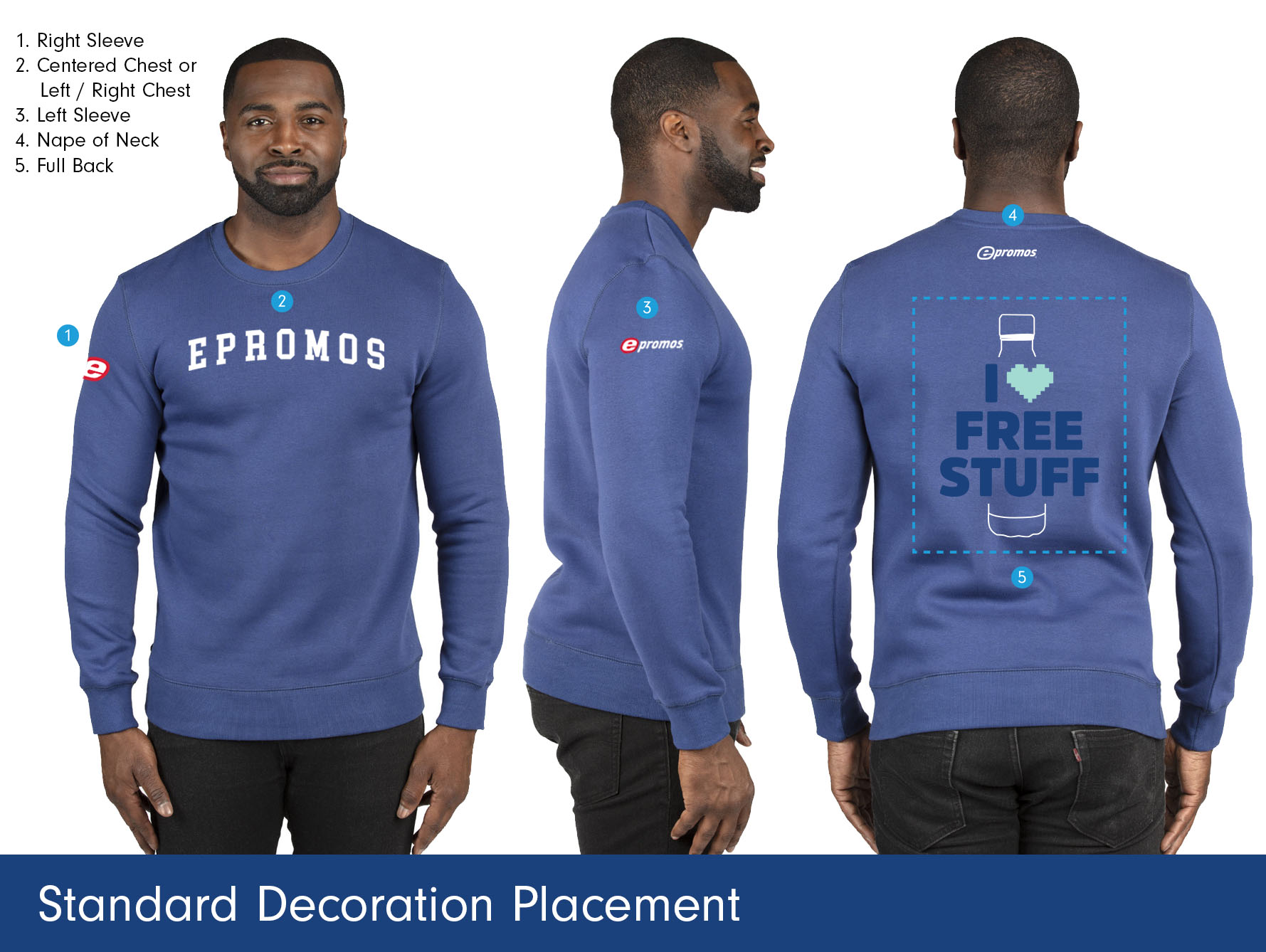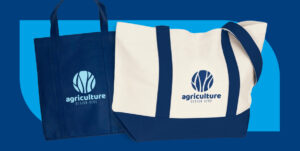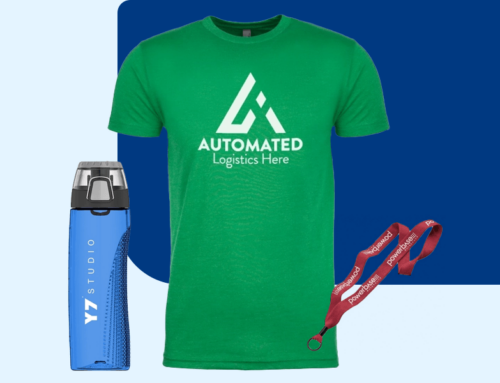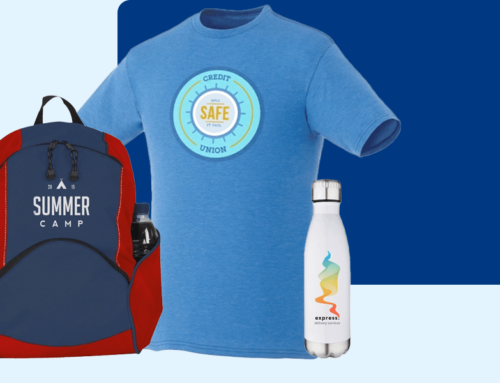05/08/2024
Classic Upgraded Imprinting Methods
In the printing world, imprinting refers to any printing method that uses pressure to add designs to a surface. As technology and printing methods evolve, new options emerge that offer extra benefits compared to traditional techniques. Learning about these new methods can help you determine which one is right for your project. This is especially important for promotional product campaigns, where the print and product quality will directly reflect on your brand.
This guide will take you through examples of today’s imprinting methods — including heat transfer, emboss, deboss, direct-to-garment and full-color wrap — and their benefits, as well as key variables to consider before you make your choice.
1. Heat Transfer Printing
Heat transfer printing — also called heat sealing or heat-press printing — involves a two-step process using heat to imprint designs onto a surface. The process starts with printing the design onto heat-transfer paper and then using a heat press machine to thermally transfer the design to the material. The machine uses pressure and heat to bind the two materials together.
Considerations
Heat transfers work well for the following applications:
- Fabrics: While you can use heat transfer on plastic, ceramic and glass, it’s best suited for fabrics.
- Small quantities: Large orders can become time-consuming and costly with heat transfer printing, making it the ideal option for smaller orders.
- Fading: Heat transfer designs can sometimes fade or crack after many washes or if they’re ironed, so keep this point in mind for your printing application.
Benefits
Businesses choose heat transfer printing because of these benefits:
- Color and detail: You can add detailed, vivid, full-color graphics to materials using heat transfers as it uses a traditional printing method to add the design to the heat transfer paper. This is especially helpful for photographic prints.
- Quick process: The printing and transfer process is simple, as the full design is pressed in one go. This aspect makes it the perfect option when you need your printing done fast.
- Cost-effective: Heat printing can be incredibly cost-effective because of its simplicity and quick process.

2. Embossing and Debossing
Embossing is a unique imprinting method where the design is pressed into the back of the material, creating a raised or puffed impression on the front with a 3D effect. When you run your hand over the surface, you’ll feel the ridges of the design. Debossing is the opposite, where the design is pressed into the surface to create an indented version.
Printers use an engraved, two-part die — a special metal tool for imprinting. One side of the die contains a raised version of the design, while the other has a depressed version embedded in the metal. The printer then sandwiches the material between the two dies and uses a combination of heat and pressure to create the desired effect.
Considerations
Consider the following before you choose to use this printing method in your next project:
- Soft materials: Embossing and debossing work well on softer surfaces like thick paper, cotton, polyester, leather and fleece. However, you can also emboss metal, wood and plastic.
- One-sided print: Unless you’re pressing the design onto a thick or hard surface, the Imprinting process can also affect the other side of the material. This variable is important to consider in case you need to use the back side.
- Customization: While this method doesn’t typically use ink, you can choose to add color or foil to the design, which will show up on the raised or indented areas and make your designs pop. Embossed and debossed designs can also have the same level throughout or contain various levels.
Benefits
Designers usually choose embossing and debossing because of these benefits:
- Long-lasting: Embossed or debossed designs don’t fade or wash away, making them last longer than printed designs.
- Adds interest: The 3D effect of this technique draws attention to that part of the design while also adding depth and texture to the whole piece.
- Luxurious feel: Embossing or debossing is an alternative to traditional printing that adds a sleek, high-end feel to designs.

3. Direct-to-Garment Printing
Direct-to-garment (DTG) printing is a revolutionary printing technique for fabric. It works similarly to traditional printing, as DTG printers apply water-based inks directly onto the fabric. Manufacturers first apply a pre-treatment to the garment, which uses heat to ensure the garment fibers lay flat and don’t interfere with the print. Then, they lay out the garment on a special table to hold it in place. Finally, they upload the design to the machine’s computer, which prints the design.
Considerations
When exploring DTG printing, note the following:
- Fabric types: DTG prints come out much better on cotton fabrics with a tight weave and smooth surface, as the fibers don’t get in the way of the print. This fabric type also absorbs the ink well.
- Polyester: Synthetic fabrics like polyester or mixed blends with a high polyester content have trouble absorbing water-based ink, so they’re unsuitable for DTG printing.
- Print placement: Most DTG printers can only print in specific areas on a garment, which limits your design placement options. For example, you may be unable to print on seams and near zippers.
Benefits
DTG printing offers a few key advantages:
- Durable: DTG printing adds ink onto the fabric, which soaks it up. As a result, the design doesn’t sit on top of the material or crack over time. It also doesn’t make the material stiff and thick.
- Detailed: DTG printers can print complex designs onto fabric at a high resolution, making detailed designs appear crisp and clean.
- Small quantities: The DTG printing process is fast and requires minimal setup, so it’s highly effective for small order quantities or even one-off print jobs.

4. Full-Color Wrap
A full-color wrap is a type of printing service that allows you to add a design all the way around a cylindrical object. Manufacturers may print simpler full-color wrap designs directly on the item or use a transfer film for more complex designs.
Considerations
Before you choose a full-color wrap for your product, consider these points:
- Shape: A full-color wrap works well for round products like bottles, mugs, cups, pens, lip balm and hand sanitizers.
- Surface: A smooth surface with no bumps or ridges will allow for easy application and make your wrap look its best.
Benefits
Full-color wraps offer the following benefits:
- Large area: Your design can span the full surface available on the object, making it a great option for patterns or photographs.
- Different angles: When printed the whole way around, full-color wraps can be viewed from all sides.
Contact ePromos to Find Out More
ePromos is your one-stop shop for promotional products. We have a wide selection of products available for brand customization and offer design and fulfillment services if you’d like us to handle the artwork or shipping for your project. From bottles, bags and shirts to tools, power banks and games, we do it all.
Your satisfaction is our top priority, and we want you to have peace of mind when you order our products. That’s why we offer free product samples and digital proofs to ensure we meet your expectations before printing begins. Our pricing is incredibly competitive, so we’re happy to match prices if you find more affordable products elsewhere. We guarantee to ship your items on the date mutually acknowledged in writing, or we’ll refund your order.
If you want to find out more about the printing methods in this article, reach out to us today. Our team is happy to answer your questions and help you choose the right method for your project.







